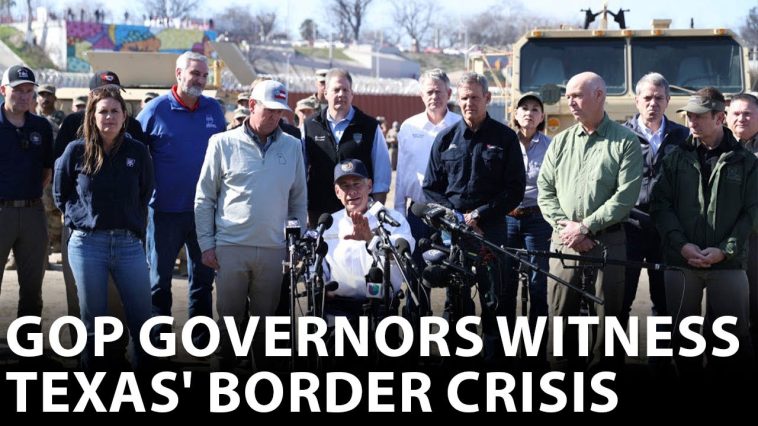In February, a group of Republican governors congregated in Eagle Pass at the invitation of Texas Gov. Greg Abbott. They gathered to address what Gov. Abbott described as ‘President Joe Biden’s border crisis.’ An array of GOP state leaders, including the aforementioned governors, pledged to dispatch another batch of National Guard personnel from their respective states to the border between Texas and Mexico.
The latter half of 2023 witnessed a marked surge in encounters with migrants at this border, an uptick attributable to changes in border policies during the pandemic. However, there was an unexpected 50% decline in such encounters in the following January. Regardless of this drop, the governors communicated to their citizenry their perceived necessity to augment the forces at the border in order to counteract what they deemed an ‘invasion.’ This term was used by both Gov. Abbott and Florida Gov. Ron DeSantis.
The leaders’ intent was also to combat drug trafficking. Yet, these deployments have drawn a barrage of criticism, dismissed by detractors as political posturing. Critics saw these moves as an attempt to capitalize on photo opportunities with uniformed personnel at the border, while simultaneously stoking nationalistic sentiments and fear during a crucial election year.
State Newsroom outlets around the nation have been monitoring this year’s state-led deployments and the associated costs in a joint effort with the Texas Tribune and Stateline. This cooperation aims to ascertain the outcomes of these promises and gain a clearer understanding of what these deployments entail at the ground level of the border.
The number of troops that states contribute to these deployments varies widely, ranging from five to 200 individuals. The duration of these deployments also fluctuates, spanning the spectrum from several weeks to a few months. The funding typically derives from state budgets as well as state emergency funds.
Also, it’s worth mentioning that the federal government directs thousands of National Guard personnel to the border on a yearly basis. Hokanson, pointing out a unique aspect of these border assignments, said, ‘There is no military training value for what we do [on the border].’
He went on to elaborate, saying, ‘For our guardsmen there, they might as well be deployed to Kuwait or somewhere overseas, because they’re away from their families. They’re there doing mission sets that are not directly applicable to their military skill set. That time, I think, would be better utilized building readiness to deter our adversaries.’ These were the words of Marisa Demarco.
Among the states sending troops to Texas is Indiana. The state’s National Guard approximates the cost of a 50-member deployment for 10 months at $7 million. These costs cover salaries as the deployments were conducted under state active duty, meaning the state of Indiana bears the financial responsibility. Other included expenses encompass transportation, supplies, and upkeep.
The National Guard officials have shared their intentions to allocate existing appropriations in their budgets to cater for these expenses. Making the decision this year, his final term in office, was Gov. Eric Holcomb. This decision was made independent of legislative action, and it has sparked minimal debate.
Republican lawmakers voiced their approval while Democrats voiced their opposition. The troop deployment occurred in early April. One noteworthy incident occurred when an Indiana guard member, who was participating in Operation Lone Star, used their firearm on a migrant who was reportedly attacking another migrant. This incident was detailed in a bulletin from the U.S. Border Patrol.
Upon hearing the news, Holcomb expressed his gratitude, stating ‘I am beyond thankful to this individual who potentially saved two lives by defending them and themselves.’ He went on to add, ‘I’m reassured that the training that they got before they deployed and assumed this active duty on the southern border was beneficial.’ These statements were conveyed to journalists via Zoom.


